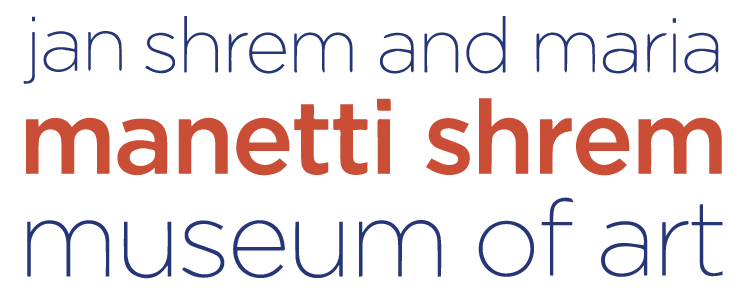Sheridan Chavira
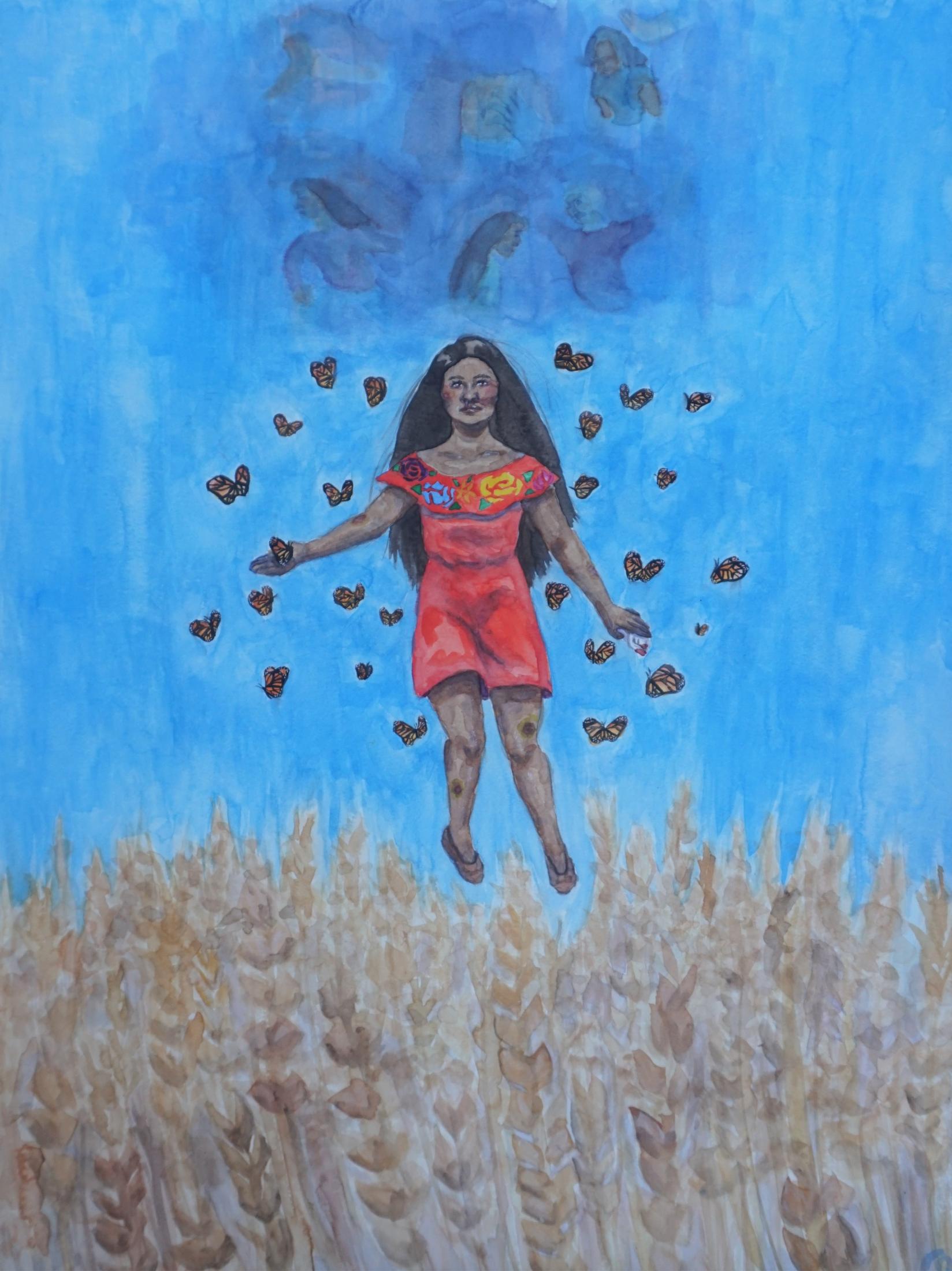
Sheridan Chavira, Resilience of the Founders, 2020. Watercolor on paper. 18 x 24 inches.
From one perspective, a woman in a red dress is seen hovering over a field of wheat in Resilience of the Founders. From another point of view, she is floating towards a cloud of trauma but untouched by it as she is supported by a monarch roost, a metaphor for community. Chavira’s painting shows how hope and resilience come with having a sense of community and support. In need of spaces to heal and in light of the unique mental health struggles that immigrants face including societal stigma, Resilience of the Founders is a painterly display of solidarity with immigrants and the importance of being an ally to immigrants. The monarch butterflies that surround the figure represent the strength and vitality, support and care that come from communities.
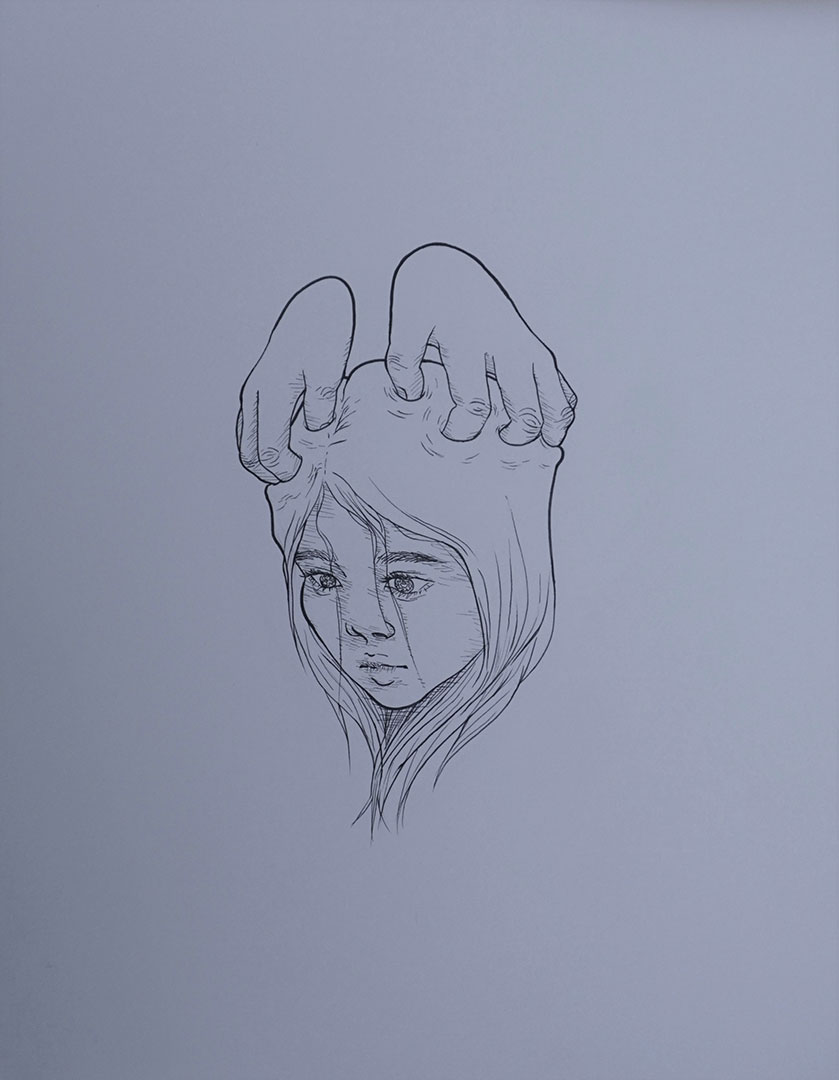
Sheridan Chavira, Mind Mold, 2020. Pen on paper. 11 x 14 inches.
Chavira’s drawing highlights the psychological toll of being isolated and trapped in an abusive situation during the COVID-19 pandemic. When a person is abused, they lose control of their own mind and lose sight of themselves and their perspective; no longer knowing which way is up and feeling like they are constantly being molded by another person’s hands.
Fiona Heenan
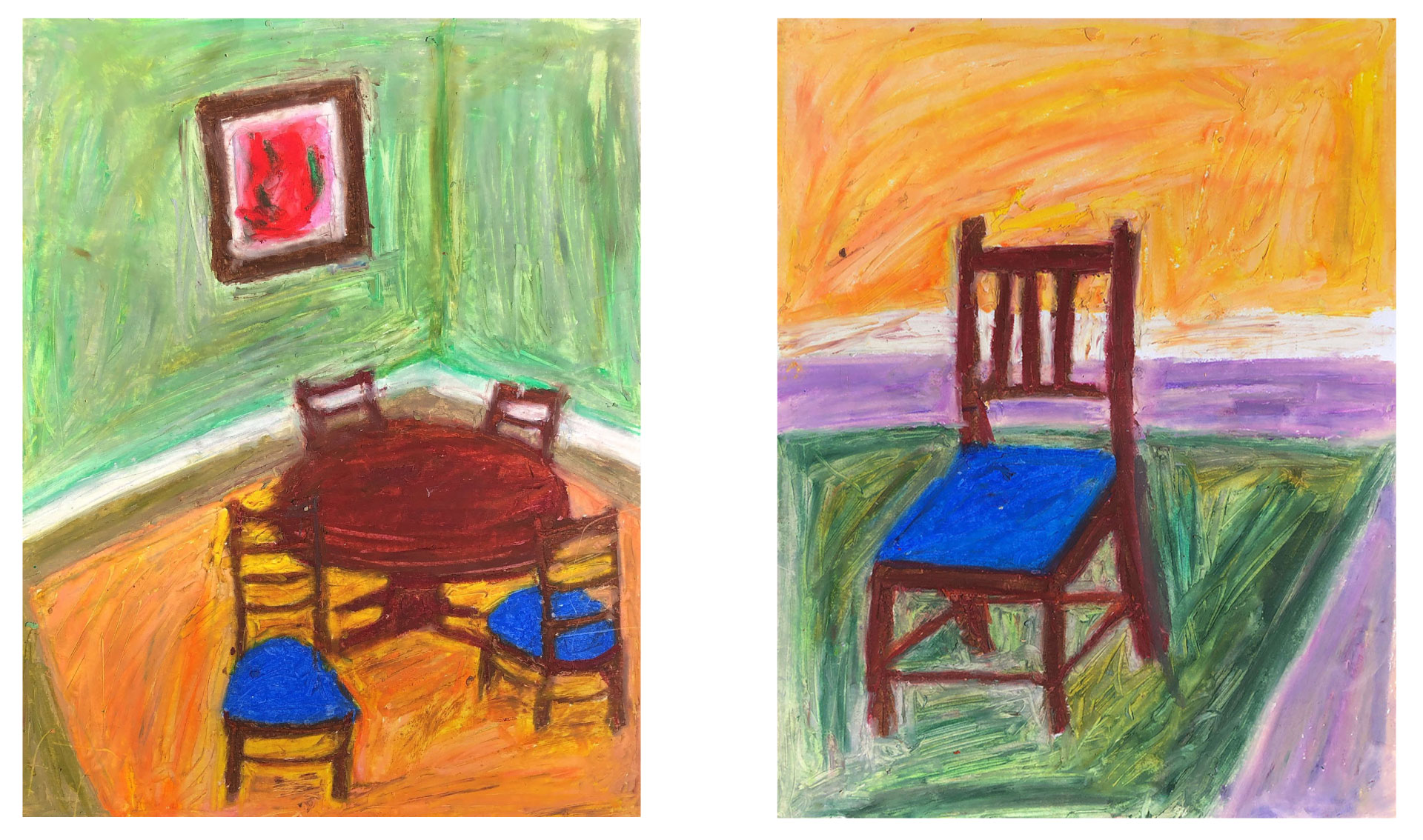
Left: Fiona Heenan, Chair Turned, 2021. Oil pastel on paper. 9 x 12 inches. Right: Fiona Heenan,

Left: Fiona Heenan, Dining Room, 2021. Oil pastel on paper. 9 x 12 inches. Right: Fiona Heenan, Dining Room Painting, 2021. Oil pastel on paper. 9 x 12 inches.
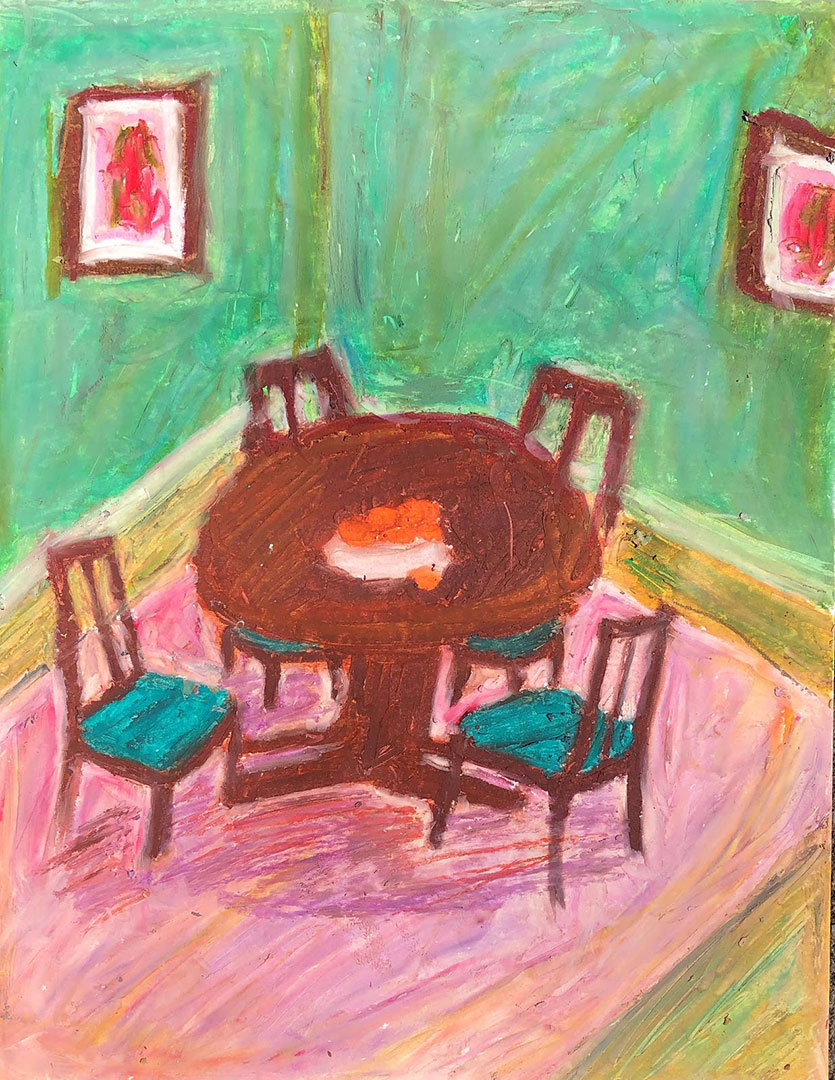
Fiona Heenan, Pink Rug, 2021. Oil pastel on paper. 9 x 12 inches.
Fiona Ferris Heenan’s art practice consists of paintings, ceramics and large scale sculptures, but in these series of oil pastel drawings created during quarantine, Heenan’s focus is on the home or in her words, “practically everything I’ve done this past year has been mediated through the home. Self-care for me has been the search for wonder in my everyday.”
Simone Leigh

Much of Simone Leigh’s diverse array of art making focuses on wellness or in the words of art writer Susan Canning “on the restorative and resistive potential of black women.” Inspired by the United Order of Tents (a mutual aid and secret society of black female nurses founded in 1840s in connection with the Underground Railroad), Leigh's film Untitled (M*A*S*H) is about an order of Black women caregivers. Playing off the long-running television show M*A*S*H, Leigh’s film highlights how care takes place behind the scenes not only in times of war, but daily, due to the onslaught of racial and gender oppression. The photographic stills show a glimpse of Leigh’s film, the blurred divide between caregiver and recipient, and how care can take shape in multivalent forms.
Paola Lagunas
Many of Paola Lagunas’s paintings render her experiences of self-care and growth as an undocumented woman of color. Her paintings remind us how learning to take care of our bodies in our own respective ways is an act of radical self-care.
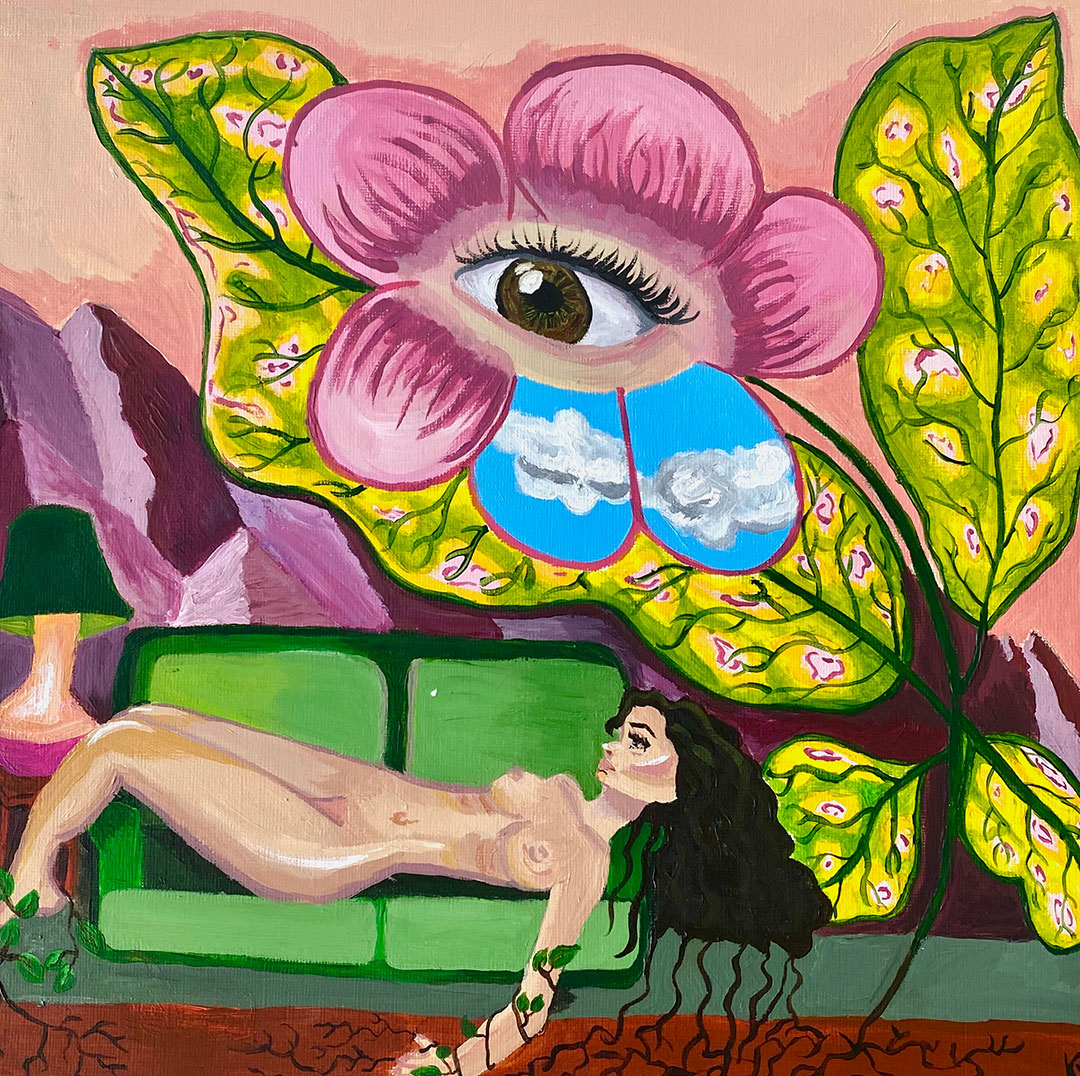
Paola Lagunas, Shoes off, February 2019. Acrylic On Paper. 12x12 inches.
In Shoes Off, Lagunas renders the feeling of being connected, and how the soles of her feet help her soul touch the earth. How many of us have felt this way before after long days of school/work? When are we finally able to just lie down and rest for a bit? How many of us have felt guilty about resting like this for “too long” because society has taught us that we aren’t deserving of so much free time and must always be doing something productive?
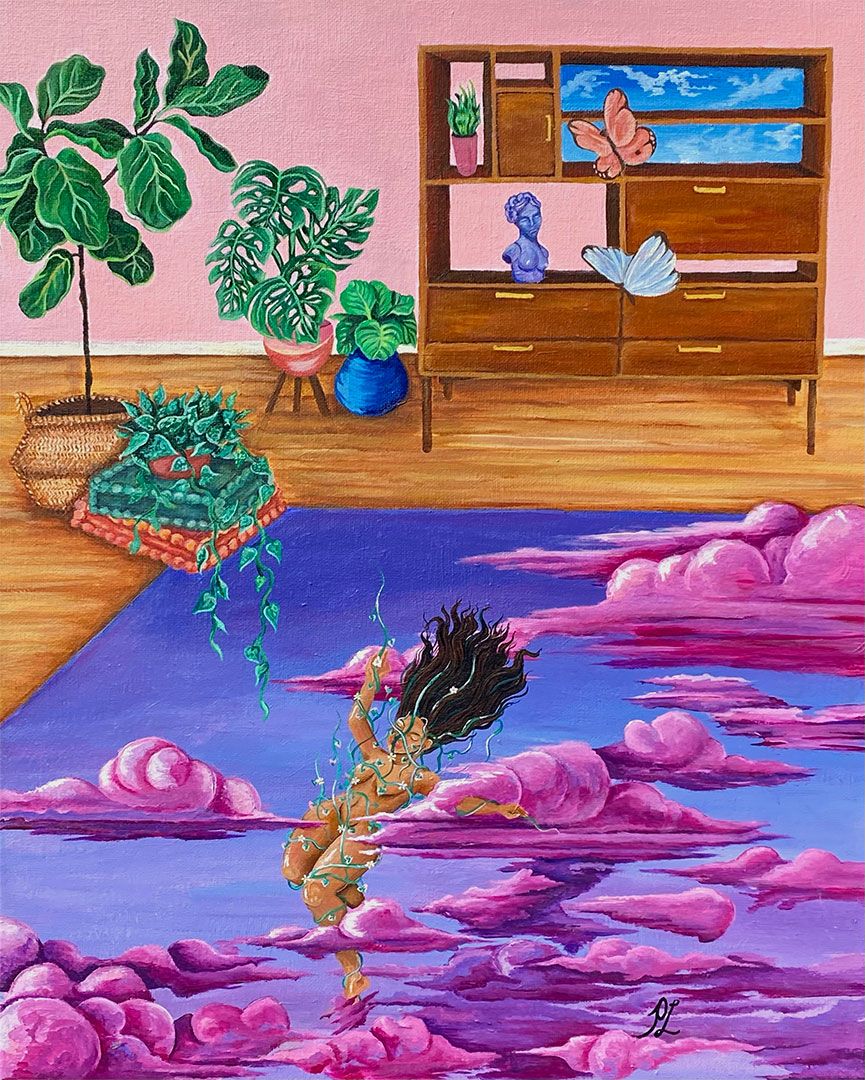
Paola Lagunas, Sola en Casa, March 2021. Acrylic on Canvas. 16x20 inches
Sola en Casa captures Lagunas’s feelings and her mixed emotions about the pandemic and having to stay home all of the time, trying to find things that make one feel happy and sane, while at the same time feeling trapped.
Xelestiál Moreno-Luz
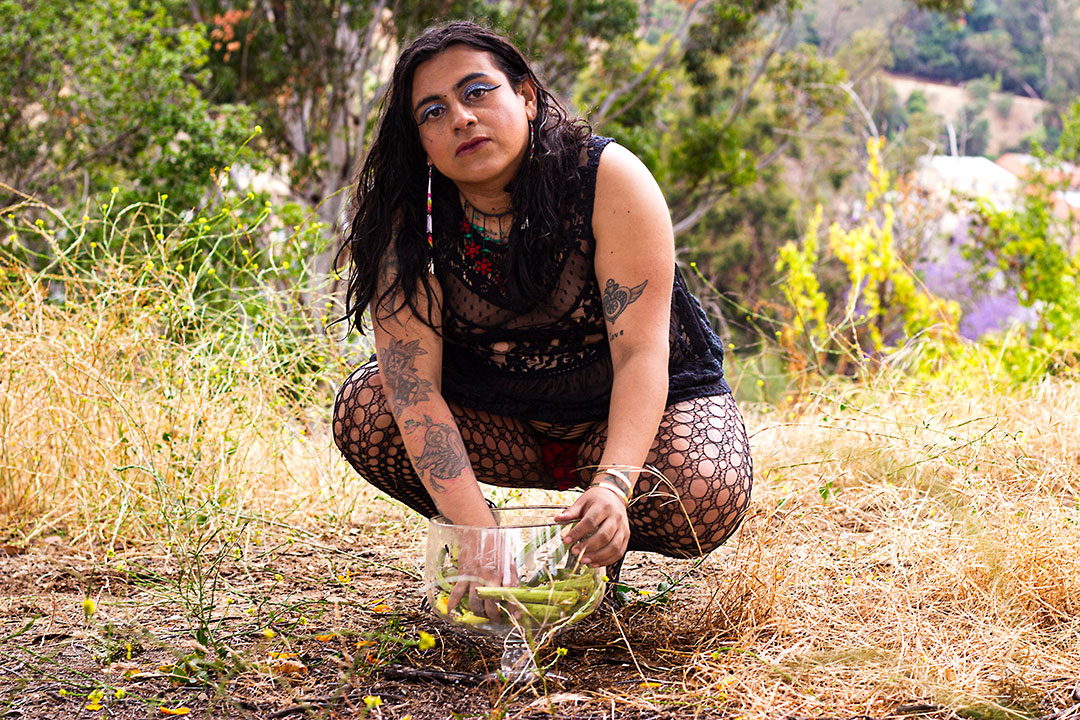
Still from Channeling, 2018. Video (color, sound: 4:24 minutes).
Xelestiál is a trans and queer multimedia artist of color living in Los Angeles. In Channeling, she consecrates space that has been stolen from the transgender community where she performs a ritual to rest and exist with the dead. She calls out the names of transgender women who have been murdered, and the non-binary people in her life she lost to suicide. “I created this performance piece thinking of how heavy the burden of my safety, and at times my body, feels in the midst of community accountability. I gravitate to caring for others, prioritizing community healing because I long for motherhood I feel I may socially embody. Pride can also look like resting with our ancestors; resting with the ones who paved the movement blocks that lift us to our liberation.”
Xelestiál Moreno-Luz, Channeling, 2018. Video (color, sound: 4:24 minutes).
Mimi McMillan

Mimi McMillan, rib, 2020. Gouache on paper, newspaper, masking tape, glue, twine. 8.5 x 11 inches.
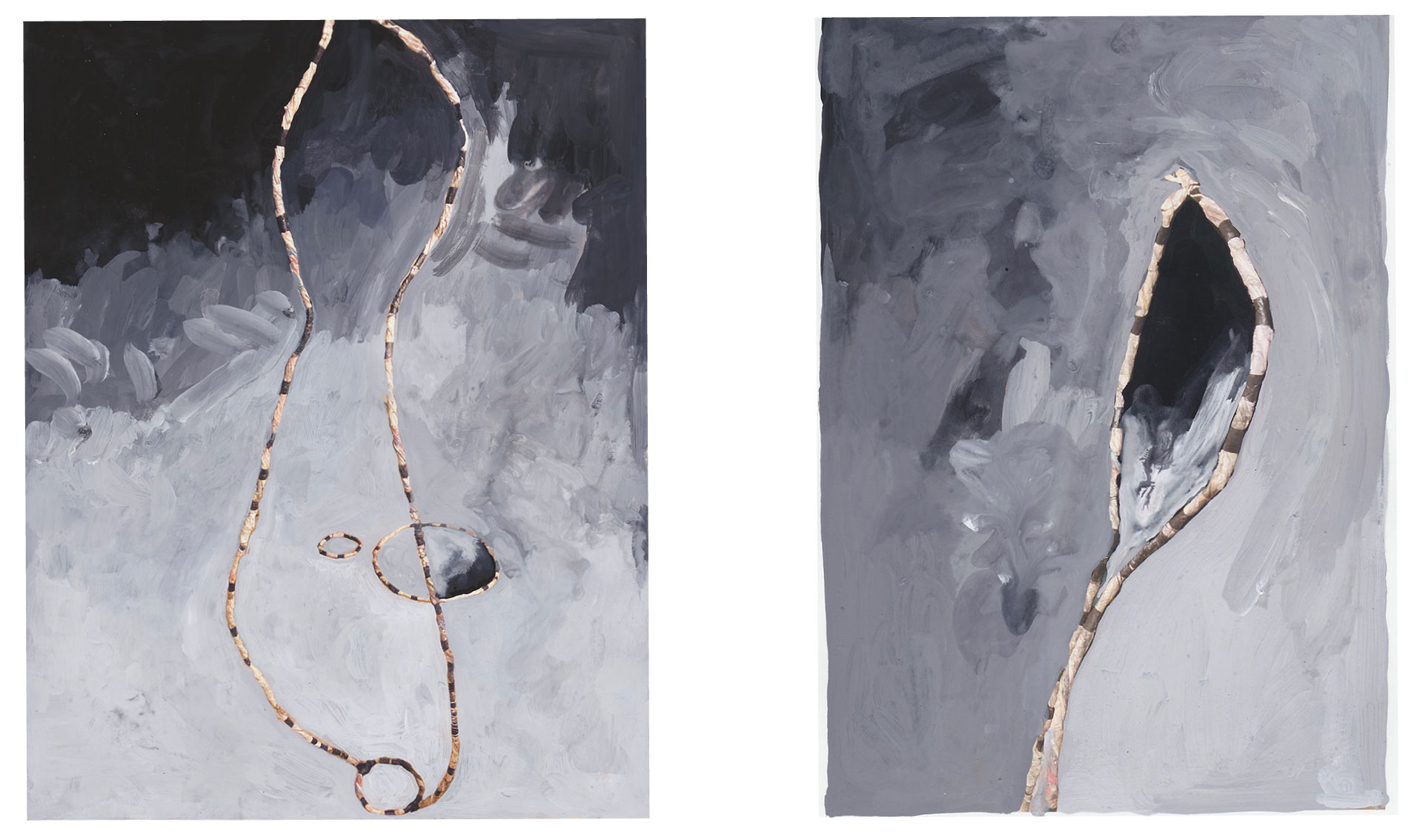
Left: Mimi McMillan, here, 2021. Gouache on paper, newspaper, masking tape, glue, twine. 8.5 x 11 inches. Right: Mimi McMillan, and there, 2021. Gouache on paper, newspaper, masking tape, glue, twine. 4 x 6 inches.
Mimi McMillan is an artist currently attending UC Davis. She works with commonplace materials that surround her, creating figural shapes by twisting sculpture out of newspaper, and placing them into abstracted grey landscapes that play with depth of space and reflection. In McMillan’s words, “Care to me is about the sensory nature of a space...an act of agency. Especially now, during the pandemic, I have been thinking about tangibility — what can be felt and held. Making the line tangible and three-dimensional captures this, but these drawings also reflect the digital conditions of creating work in a pandemic. They are translated into two-dimensional drawings that maintain the traces of the material and sculptural process.”
Benjamin Qin
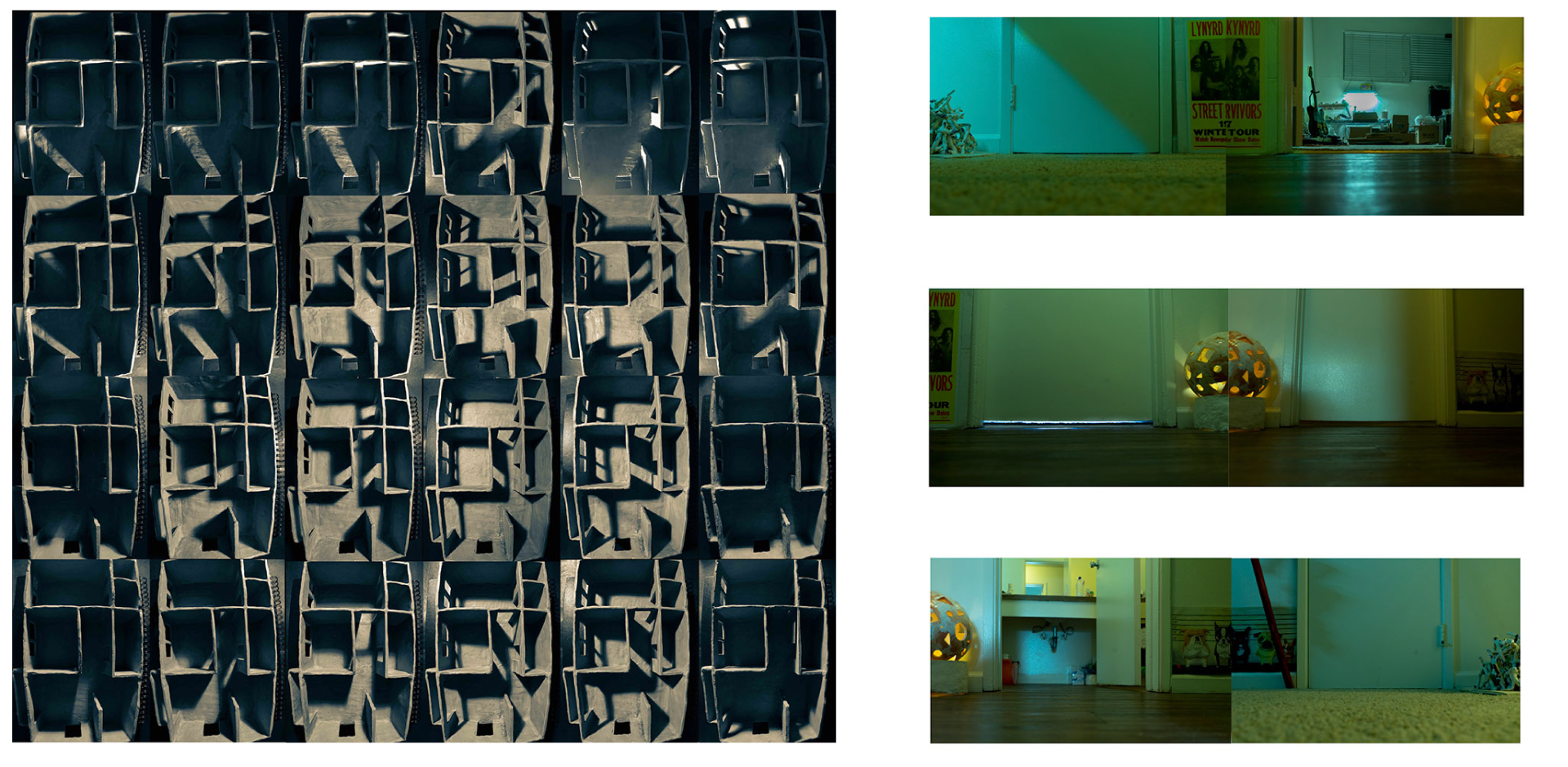
Left: Benjamin Qin, 945 J Street #333, 2020. Inkjet pigment print, ceramic. 36 x 32 inches. Right: Benjamin Qin, Claustrophobia, 2020. Inkjet pigment print. 28 x 36 inches.
Qin’s photographs are commentaries of the challenges of being in quarantine that unexpectedly warranted a lifestyle shift last year, a counterproductive move for a UCD student-artist who is very “studio-based” and thrives on dialogue with his colleagues and professors. Seeking comfort and care – a provision of what is necessary for the maintenance of one’s mind in all senses of the word – Qin modified his apartment into a make-shift studio. Claustrophobia is a composite portrait of his apartment and unconscious; of a place that felt like “being trapped in a cell...barely distinguish[ing between] illusions and reality.”
In quarantine, Qin made clay models of all the places that he had ever lived. Projecting twenty-four different lighting sets onto the unfired clay model, Qin attempts to photographically capture in one shot, his observations of watching the slow movements of the sun during a 24 hour period in his apartment. On one level, 945 J Street #333 presents an endless situation. On another level, the care he took in handling the clay and making 945 J Street #333, the artist came to feel in his words “strong connections between human beings and residency. I related our situation at home strongly with our ancestors...hiding in caves for safety from the beasts and [the] cold, and...doing this [to] sav[e] ourselves from a virus.”
